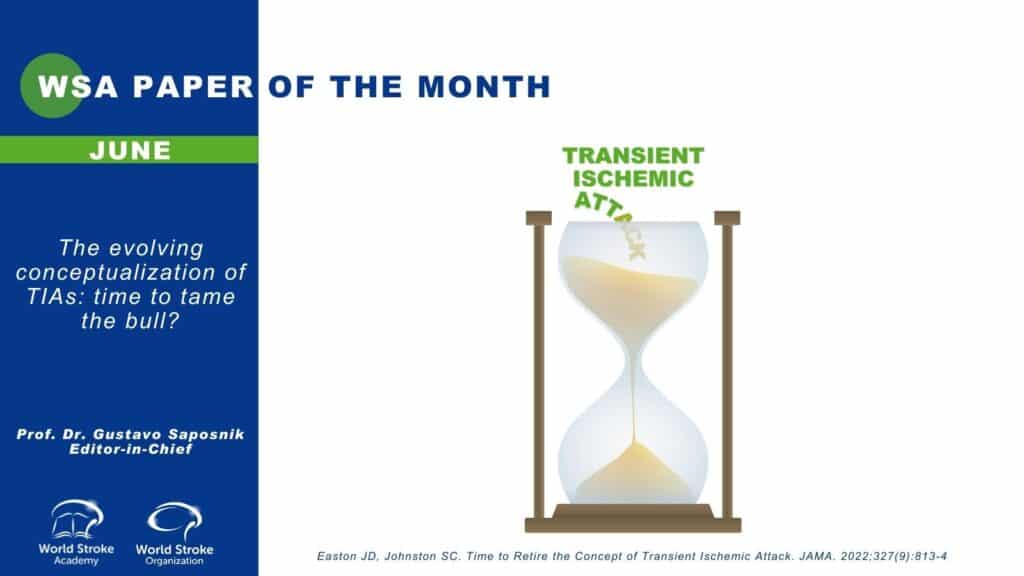The Paper of the Month June
03 Jun 2022The evolving conceptualization of TIAs: time to tame the bull?

Title: The evolving conceptualization of TIAs: time to tame the bull?
Author: Prof. Dr. Gustavo Saposnik, Editor-in-Chief WSA
This article is a commentary on the following
“Unity is strength… when there is teamwork and collaboration, wonderful things can be achieved” – Mattie J.T. Stepanek (13 yo American poet and author of seven NY Times bestsellers)
In the present editorial written by Drs. Donald Easton and Clay Johnston deconstruct the conceptualization of transient ischemic attacks (TIAs).(1) They provide a critical view using the TIA term and proposed the use of “minor stroke” that also mimic patients’ lexicon. They elaborate about the pitfalls by labelling patients as having a TIA and missing an opportunity to optimizing stroke prevention.
Definitions, as well as policies, should evolve with technological advancements (e.g. more sensitive brain imaging modalities, new therapeutic strategies, the application of pharmacogenomics to individualize stroke prevention).
In the video interview, Dr. Johnston explained the progress of our understanding in the diagnosis and management of TIAs since the landmark article from 22 years ago on the ABCD2 risk predictive score of stroke.(2) Previous studies show an improvement in the diagnostic accuracy of stroke by adding brain and vascular imaging (ABCD2-I and ABCD3-I).(3) The 2021 AHA Guideline for the Prevention of Stroke in Patients With Stroke and TIAs and the 2021 European Stroke Organization Guidelines on the management of TIAs distinguished between TIA and minor strokes, recommending similar investigations, and short-term dual antiplatelet for selected patients as per the CHANCE and POINT trials.(4, 5)
What is the anticipated future to optimize cardiovascular prevention after a “minor stroke” (or a TIAs)?
1) More clinical trials on stroke prevention are on the way (https://clinicaltrials.gov/ct2/results?cond=Transient+Ischemic+Attack&age_v=&age=1&gndr=&type=Intr&rslt=&phase=2&phase=3&Search=Apply).
2) New educational strategies are needed to overcome knowledge-to-action gaps.(6-8)
3) New paradigms of care would be required to concentrate efforts on the most effective strategies instead of wasting resources in sophisticated tests that would not alter management.
Drs. Easton and Johnston’ editorial is aligned with a call-to-action for a global change in behaviour to optimize stroke prevention by involving (and empowering) patients and their families, primary care physicians and specialists, health care providers and policymakers.
References
1. Easton JD, Johnston SC. Time to Retire the Concept of Transient Ischemic Attack. JAMA. 2022;327(9):813-4.
2. Johnston SC, Gress DR, Browner WS, Sidney S. Short-term prognosis after emergency department diagnosis of TIA. JAMA. 2000;284(22):2901-6.
3. Kelly PJ, Albers GW, Chatzikonstantinou A, De Marchis GM, Ferrari J, George P, et al. Validation and comparison of imaging-based scores for prediction of early stroke risk after transient ischaemic attack: a pooled analysis of individual-patient data from cohort studies. Lancet Neurol. 2016;15(12):1238-47.
4. Kleindorfer DO, Towfighi A, Chaturvedi S, Cockroft KM, Gutierrez J, Lombardi-Hill D, et al. 2021 Guideline for the Prevention of Stroke in Patients With Stroke and Transient Ischemic Attack: A Guideline From the American Heart Association/American Stroke Association. Stroke. 2021;52(7):e364-e467.
5. Fonseca AC, Merwick Á, Dennis M, Ferrari J, Ferro JM, Kelly P, et al. European Stroke Organisation (ESO) guidelines on management of transient ischaemic attack. Eur Stroke J. 2021;6(2):V.
6. Saposnik G, Mamdani M, Montalban X, Terzaghi M, Silva B, Saladino ML, et al. Traffic Lights Intervention Reduces Therapeutic Inertia: A Randomized Controlled Trial in Multiple Sclerosis Care. MDM Policy Pract. 2019;4(1):2381468319855642.
7. Patterson F, Knight A, Dowell J, Nicholson S, Cousans F, Cleland J. How effective are selection methods in medical education? A systematic review. Med Educ. 2016;50(1):36-60.
8. Prakash S, Sladek RM, Schuwirth L. Interventions to improve diagnostic decision making: A systematic review and meta-analysis on reflective strategies. Med Teach. 2019;41(5):517-24.
Author Interview:
Dr. Clay Johnston, M.D., Ph.D, Professor of Neurology, Department of Neurology, Dell Medical School
1. What did you set out to study?
In the big picture, we set out to understand how risky TIAs were, how to find out which were of greatest risk, and, more recently, what we could do to prevent the frequent strokes that were happening after TIAs. Along the way, we found out that many of those with transient symptoms that we called TIAs actually had infarcts, and as imaging has improved, that fraction with infarcts has steadily increased. This made us realize we were distracting people with trying to differentiate TIAs from strokes and that it would be much simpler conceptually, and appropriate therapeutically, to just discard the TIA term and call all of these events strokes.
2. Why this topic?
People didn’t know what to do with TIAs 25 years ago. They didn’t know whether to care. It’s much clearer now that they are really all strokes underneath.
3. What were the key findings?
In addition to the discoveries above, we also found that minor strokes by the old definition acted similarly to TIAs in the old definition. We found we could prevent strokes in these patients, whether we called them TIA or minor stroke, with stronger and stronger antiplatelet agents.
4. Why is it important? Or how might these results impact clinical practice?
We hope that simplifying the way we talk about stroke and TIA will raise awareness of the seriousness of all these events and simplify messaging for patients and providers.
5. What surprised you most?
I’ve been surprised about how little the public understands the concept of TIA.
6. What’s next for this research?
Even with recent advances in dual antiplatelet therapy after these events, there are still too many strokes occurring in the weeks afterwards. We are pushing forward to test new agents in this setting. More trials are on the way!
7. Is there anything you’d like to add?
I only want to thank the WSO (World Stroke Organization) for all its great works. Stroke is a huge global problem and it is wonderful to see leaders across the globe reaching beyond national borders to address it.

